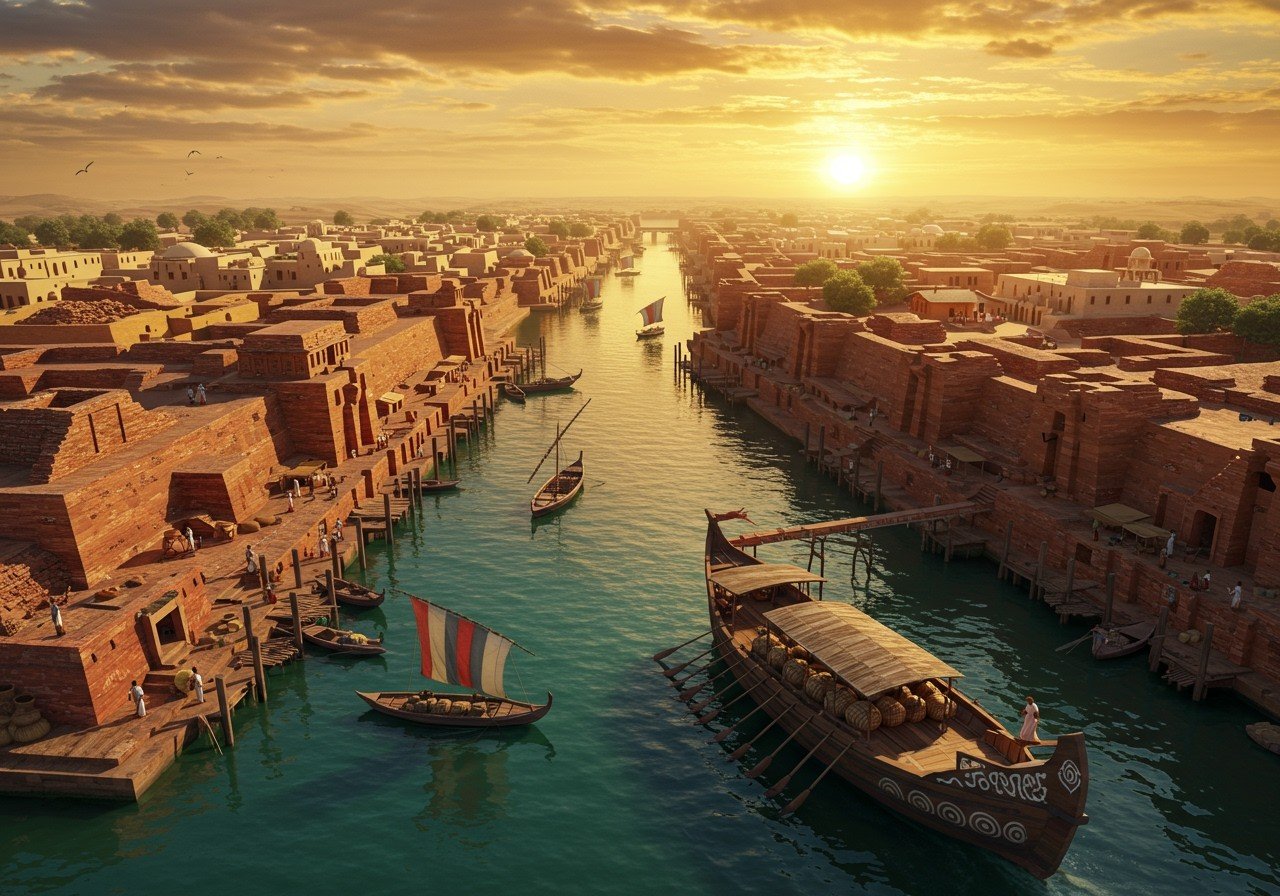
Lothal, an ancient port city of the Indus Valley Civilization (2400-1600 BCE), offers a captivating glimpse into one of the world’s earliest urban societies. Situated along the Bhogava River in the Gulf of Khambhat, Gujarat, India, Lothal’s sophisticated dockyard, urban planning, and maritime activities highlight its importance as a major trading hub. This article explores Lothal’s discovery, historical significance, archaeological findings, maritime legacy, and cultural aspects.
Discovery and Excavation
Lothal’s rediscovery in 1954 by archaeologist S.R. Rao marked a turning point in understanding the Indus Valley Civilization. The Archaeological Survey of India’s systematic excavations revealed the city’s well-preserved layout, including its dockyard, warehouse, residential areas, and streets. These findings significantly expanded our knowledge of the civilization’s reach and complexity.
Historical Significance
Lothal stands as a testament to the advanced urban planning of the Indus Valley Civilization. The city’s grid-like street layout, drainage system, and organized residential areas showcase a remarkable understanding of urban design. The dockyard, a marvel of ancient engineering, facilitated trade and commerce, establishing Lothal as a vital link in a vast trade network. The discovery of a bead-making factory and a large warehouse further emphasizes Lothal’s economic significance and trade connections with regions like Mesopotamia.
Archaeological Treasures
The artifacts unearthed at Lothal provide invaluable insights into the daily lives, craftsmanship, and cultural practices of its inhabitants. These include:
- Bead-making factory: This discovery highlights Lothal’s specialized craftsmanship and its role in producing intricate beads for trade and adornment. The factory’s presence suggests a thriving local economy and the importance of beads in their culture.
- Pottery and tools: A wide range of pottery, tools, and household items have been found, offering a glimpse into the daily routines and domestic life of Lothal’s residents. These artifacts paint a picture of their skills, resourcefulness, and technological advancements.
- Seals: The discovery of numerous seals with inscriptions provides evidence of Lothal’s administrative systems, trade practices, and possible writing system. These seals served as important markers of identity and authority.
- Cemeteries: The excavated cemeteries of Lothal shed light on burial practices, social structures, and beliefs about the afterlife. The careful arrangement of graves and accompanying artifacts offer clues about their rituals and worldview.
Maritime Legacy
Lothal’s dockyard, one of the earliest known in the world, stands as a testament to the city’s maritime prowess. Its ingenious design, incorporating tidal locks and a complex system of channels, demonstrates a deep understanding of tides and shipbuilding techniques. This infrastructure enabled Lothal to connect with distant lands, fostering trade and cultural exchange.
Cultural and Ritual Practices
Archaeological evidence points to a rich tapestry of cultural and ritual practices in Lothal:
- Fire altars: The presence of fire altars suggests the importance of fire worship and religious ceremonies in the lives of Lothal’s inhabitants. This indicates a structured belief system and ritualistic practices.
- Jewelry, pottery, and seals: The intricate designs and craftsmanship displayed in these artifacts reflect a vibrant artistic tradition and the importance of aesthetics in their culture. These objects also highlight the skills and creativity of the artisans.
- Social structure: The layout of the city, the varying sizes of dwellings, and the distribution of artifacts suggest a hierarchical social structure. Archaeologists infer social organization and class distinctions from these findings.
- Festivals and rituals: While direct evidence is limited, the presence of ritualistic objects and public spaces suggests the importance of communal gatherings and celebrations. These rituals likely played a vital role in reinforcing social bonds and expressing shared beliefs.
Poojn.in: Connecting Ancient Heritage with Modern Devotion
Just as Lothal served as a vital trade center connecting different cultures, Poojn.in acts as a bridge between India’s rich spiritual heritage and modern devotees. As India’s largest Dashakarma bhandar, Poojn.in offers a wide selection of authentic puja items, reflecting the traditions and craftsmanship of ancient India.
Inspired by Lothal’s historical significance? Poojn.in offers a range of products that resonate with the spirit of ancient rituals and traditions:
- Brass and copper vessels: Similar to those used in ancient times, these vessels connect you to the rich history of Indian worship.
- Clay lamps (diyas): Echoing the pottery traditions of the Indus Valley, these diyas illuminate your prayers with a touch of ancient heritage.
- Traditional prayer items: Maintain age-old worship practices with authentic and high-quality puja essentials.
Explore Poojn.in’s extensive collection and experience the seamless blend of tradition and convenience, bringing the sacred rituals of ancient India to your doorstep.
Conclusion
Lothal’s discovery has profoundly impacted our understanding of the Indus Valley Civilization, showcasing its advanced urban planning, maritime expertise, and vibrant cultural practices. This ancient port city stands as a reminder of the ingenuity and sophistication of our ancestors. By exploring and appreciating Lothal’s legacy, we gain a deeper connection to our rich heritage.


